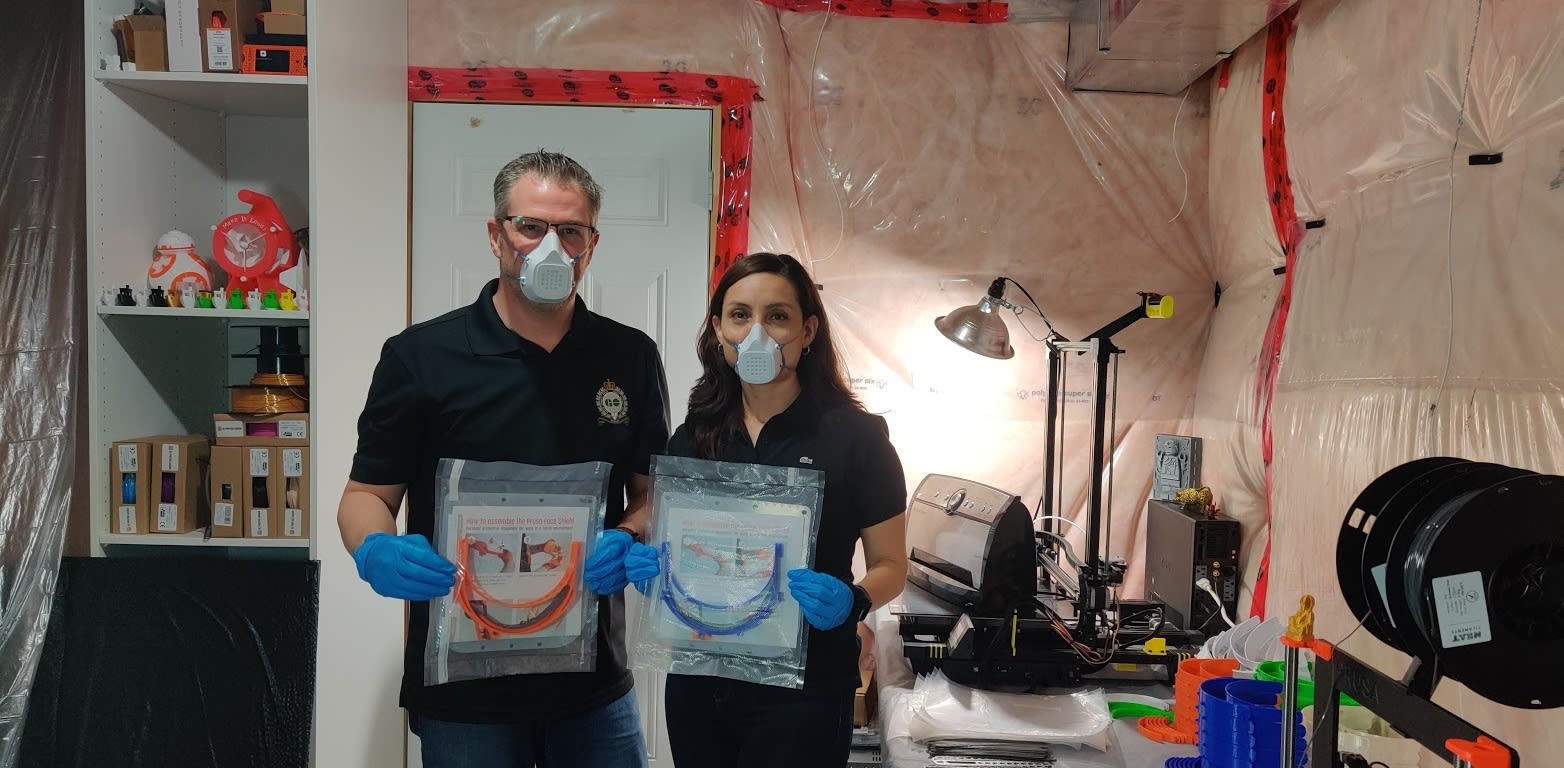Metrolinx legal eagle 3D prints protective face shields
Ed Estoppey is using his 3D printers to create protective equipment for the healthcare community.
Apr 20, 2020
As a prosecutor for Metrolinx, Ed Estoppey is used to being part of a complex and sophisticated security shield.
His branch of Metrolinx legal service watch over customers, transit staff and Metrolinx property, by going to court to challenge fare evaders, those who park illegally as well as those who trespass.
Now, on his own time as he works from home, Estoppey – helped by his wife and teenage daughter – is expanding his protection to include front-line medical officials who are battling COVID-19.
Metrolinx prosecutor Ed Estoppey, and his wife Angelica, work in their small 3D factory. (Ed Estoppey photo)
In the basement of his Kleinberg home – cordoned off with plastic sheets so his cats don’t disturb the work – Estoppey has a small factory of 3D printers running 24-hours a day, creating medical face shields.
There used to be four machines, but one couldn’t handle the stress of the work, so gave up the ghost.
The plastic face shields – largely built using the same plastic you would find in food and pop containers – include a clear visor and adjustable head-strap. Estoppey churns out about 20 each day, and has just begun to ship them off to medical facilities in need.
Using a design used in the Czech Republic, he’s created more than 135 so far.
Recently, Canadian hockey legend Hayley Wickenheiser brought volunteers together to collect and distribute vital personal protection equipment to help fight the COVID-19 pandemic.
“Just Canadians coming together,” the Canadian Olympian told CBC.ca in a recent interview. “That’s just what it is. It’s just grassroots.”
Sealing up the kits for transport. (Ed Estoppey photo)
Estoppey is just one of a large network of private volunteers manufacturing personal protective equipment across Canada, and beyond. Like volunteers during times of national disaster, they share information on which local hospitals or facilities need equipment the most.
“This is like a war – but silent,” says Estoppey.
“As Canadians, this is the type of people we are. And in a situation like this, it’s important to take care of the people who are taking care of us all.”
His 3D printers are on constant timers – when one batch is finished, another begins. Estoppey’s wife, Angelica, and their 18-year-old daughter, Sofia, are part of the grass-roots manufacturing and packaging team.
The prosecutor’s first 3D printer was a Christmas gift from Angelica. For the most part, it was used to create novelty Star Wars figures and cool lamp shades that hold family photos.
Now, starting earlier this month, the work of the machines – which create complicated, solid pieces by layering plastic based on a digital design – has become more vital. As he works, Estoppey uses his own protective equipment – gloves and mask – to make sure the hospital shields stay uncontaminated.
The kits, ready to be shipped to frontline medical workers. (Ed Estoppey photo)
He was inspired by stories of frontline medical workers needing personal protective equipment. Their ranks include his mother and sister, who are personal support workers, as well his wife’s cousin, who is a doctor.
“The printers were just sitting idle,” he explains. “I thought we might as well put them to good use.
“But we wanted them to be proper.”
That meant tossing out an original design that used more flimsy plastic for the main visor. It was low-quality and wasn’t perfectly clear to see through.
Now he has the design down-pat, and his goal is to be shipping them as quickly as he has a batch done.
One day, there won’t be a need, and the machines in his basement can return to more whimsical tasks. Until then, Estoppey and his family will continue to tend to a manufacturing plant that produces something more than plastic pieces, assembled to become barriers from a killer virus.
They – and other homefront volunteers – are building hope for us all.
